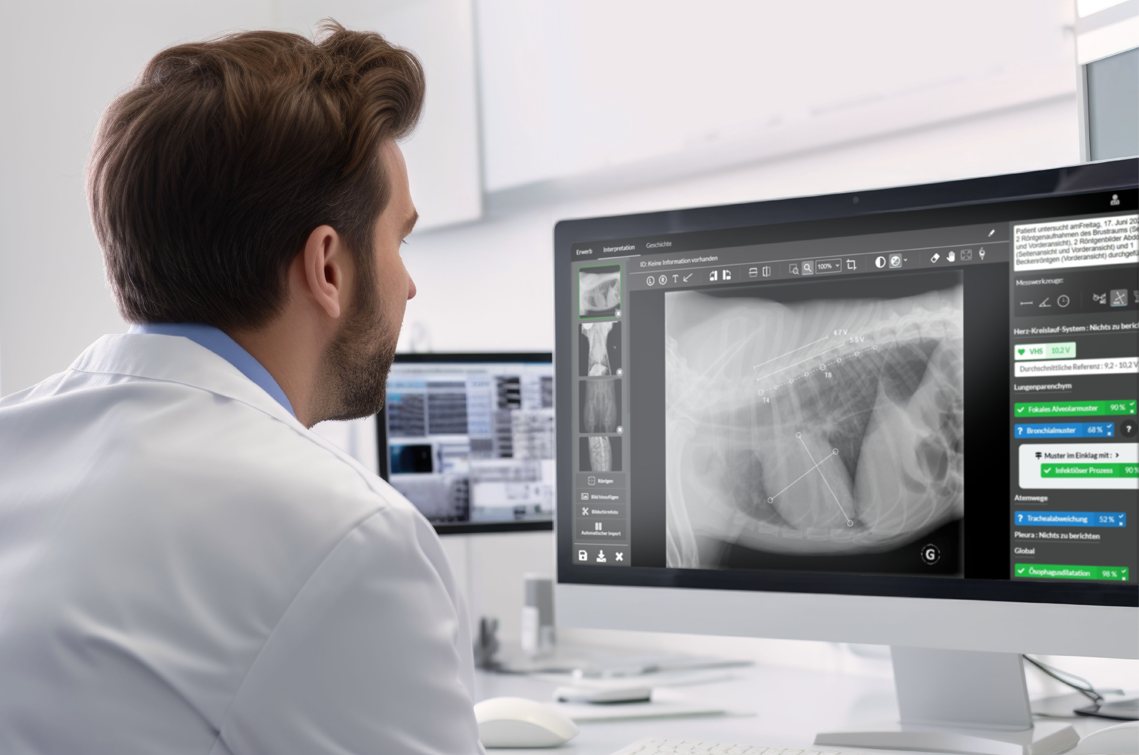Scientific studies on artificial intelligence in veterinary medicine
It makes sense to scientifically monitor and evaluate innovative progress such as the development of artificial intelligence (AI). The use of AI in veterinary medicine can be a far-reaching and useful support for veterinarians. A scientific study focussing on the VHS metric comes to precisely this conclusion.
Study ‘Comparison of a Deep Learning Algorithm vs. Humans for Vertebral Heart Scale Measurements in Cats and Dogs Shows a High Degree of Agreement Among Readers’ - Translation: Comparison of a deep learning algorithm with humans in measuring vertebral heart rate in cats and dogs shows a high degree of agreement among readers’
Copyright © 2021 Boissady, De La Comble, Zhu, Abbott and Adrien-Maxence
Heart disease is one of the most common causes of death in dogs and cats. The Vertebral Heart Score (VHS) is a tool for quantifying radiological heart enlargement and predicting the occurrence of heart failure. This measure is determined on the basis of X-ray images.
The aim of this study was to evaluate the performance of artificial intelligence (AI) in performing VHS measurements in comparison to two board-certified specialists. The data basis consisted of the average of the individual VHS measurements performed by the certified specialists. Two different methods were used to determine the short heart axis on X-ray images of dogs: Firstly, the original method published by Buchanan and secondly, the modified method proposed by the authors of the EPIC study. Only the method developed by Buchanan was used to assess the cat radiographs.
Overall, the VHS calculated by the AI, the radiologist and the cardiologist showed a high degree of agreement in both dogs and cats (intraclass correlation coefficient (ICC) = 0.998). In canine patients, the comparison of the two methods used by the specialists also showed a high degree of agreement (ICC = 0.999). When specifically analysing the results of the AI-VHS in comparison to the readings of the two specialists, the agreement was excellent for both canine radiographs (ICC = 0.998) and feline radiographs (ICC = 0.998).The performance of the AI trained to localise VHS reference points was equivalent to manual calculation by feline and canine specialists.
Such a computerised technique could therefore be of great benefit to general veterinarians to limit inter-observer variability and obtain more comparable VHS readings over time.
The Convolutional Neural Network (CNN) used in this VHS measurement study is also the basis of our PicoxIA software. PicoxIA, a software for AI-supported X-ray diagnosis recognizes specific lesions in selected regions in X-ray images of dogs and cats. One aspect of this is the automated VHS measurement and classification of the measured value based on established reference values. The result is available within a few seconds and uses the stored patient information to show whether the VHS value is within or outside the normal and healthy range.
To get a comprehensive picture of the potential applications of artificial intelligence in veterinary medicine, we recommend that you read the full study. You can access it on the website of the specialist journal Frontiers in Veterinary Science and also download it as a PDF.
